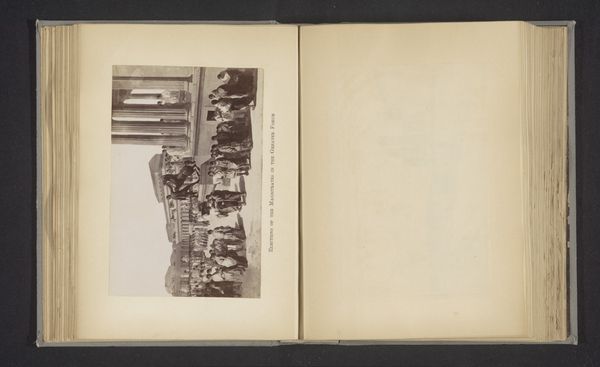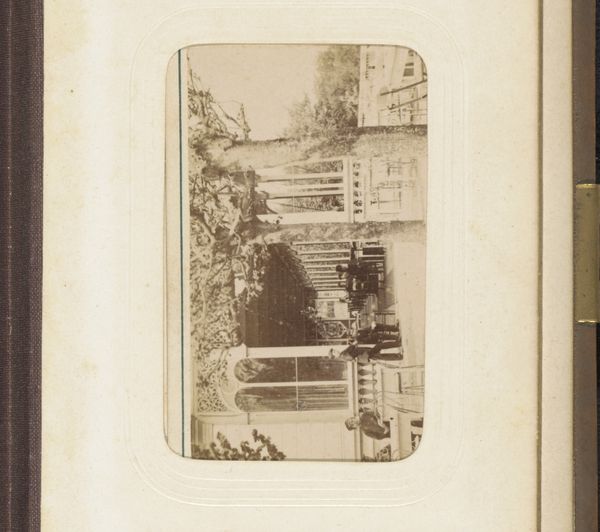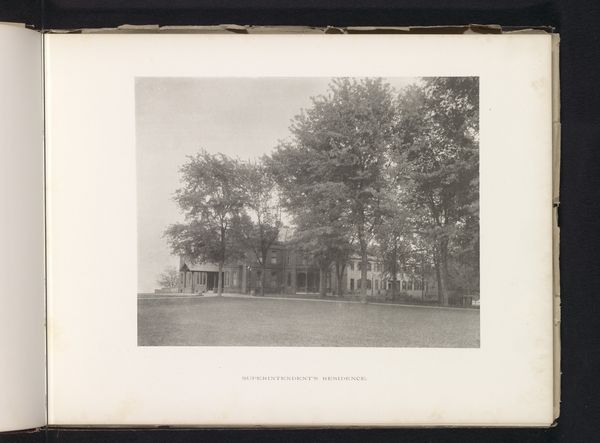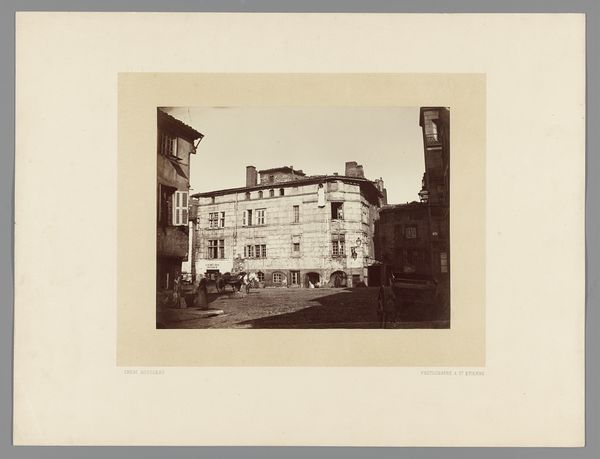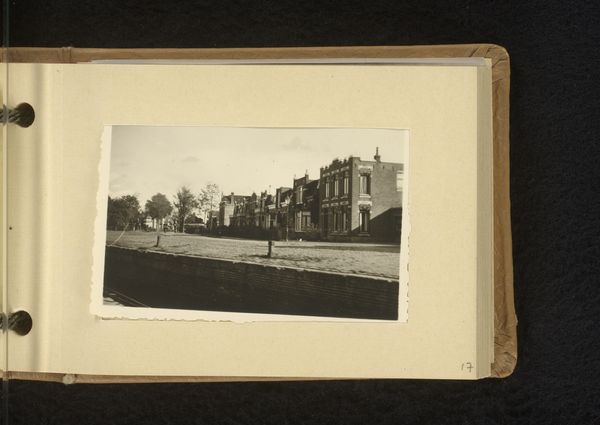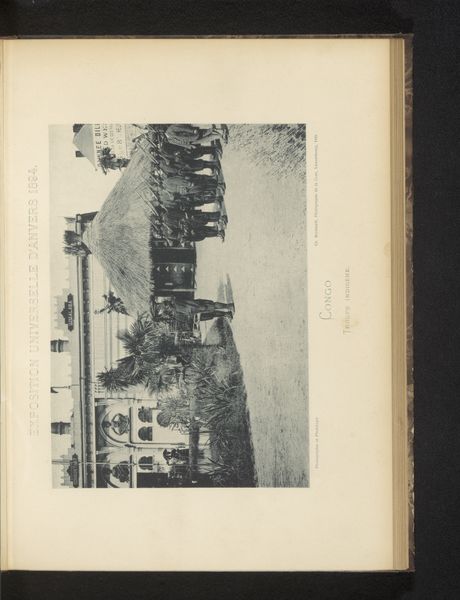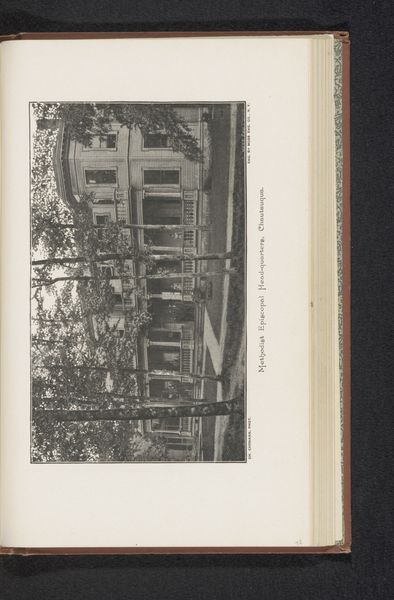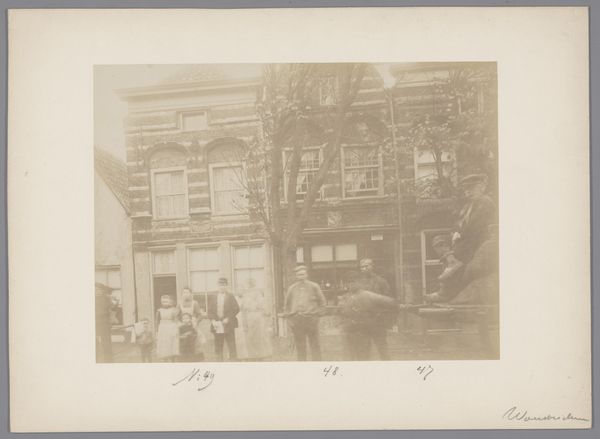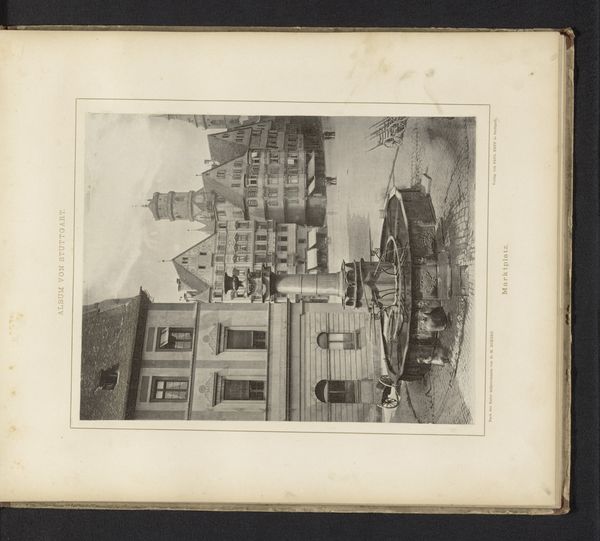
Militaire parade op het terrein van de United States Naval Academy te Annapolis before 1890
0:00
0:00
print, photography, gelatin-silver-print
#
portrait
# print
#
landscape
#
photography
#
gelatin-silver-print
#
cityscape
#
genre-painting
#
realism
Dimensions: height 177 mm, width 236 mm
Copyright: Rijks Museum: Open Domain
Editor: Here we have "Militaire parade op het terrein van de United States Naval Academy te Annapolis," a gelatin silver print taken before 1890 by Edward H. Hart. The composition really strikes me – it’s so formally arranged and structured, yet also feels a bit static and restrained. What compositional elements do you find most significant? Curator: The use of linear perspective to organize the figures in space creates a powerful sense of depth. Notice the convergence of lines leading to the vanishing point which firmly grounds the composition. What effect do you think this linear arrangement achieves, especially given the contrast with the building in the background? Editor: Well, it makes the eye travel deep into the scene, but it also reinforces that sense of order and regimentation. Is it about more than the composition, then? Curator: Not at all. The photograph’s texture, ranging from smooth building surfaces to coarse rendering of vegetation, demonstrates a comprehensive control of contrast to enrich the picture's structural dimensions. But how does that compare to what it may be implying about control and power dynamics on display here? Editor: I see your point. It isn’t just about depth, but it is about defining roles within the structure, perhaps reinforcing their strict hierarchies. Curator: Exactly! And consider the play of light and shadow, and what effect the bright light has upon our reading of the forms, especially concerning depth and flatness in art. Editor: This work highlights the essence of the image as something not solely descriptive but thoroughly constructed and meticulously planned in ways I hadn't fully considered at first glance. Curator: Precisely. A work like this proves photography can be a study in the inherent structuring principles available to an artist.
Comments
No comments
Be the first to comment and join the conversation on the ultimate creative platform.



